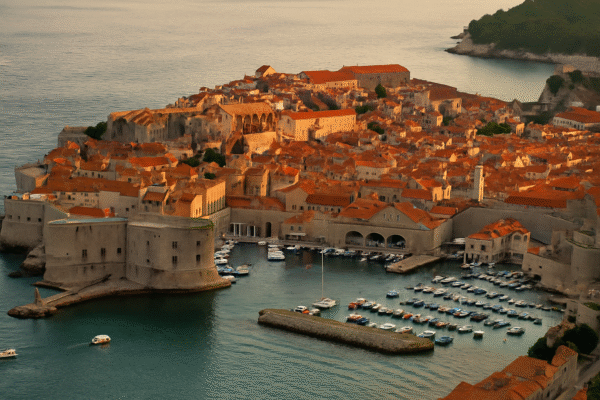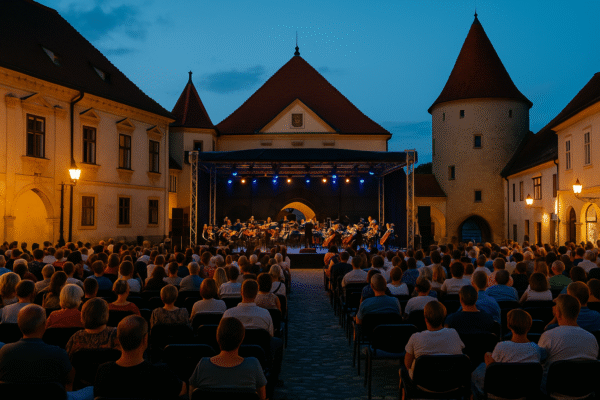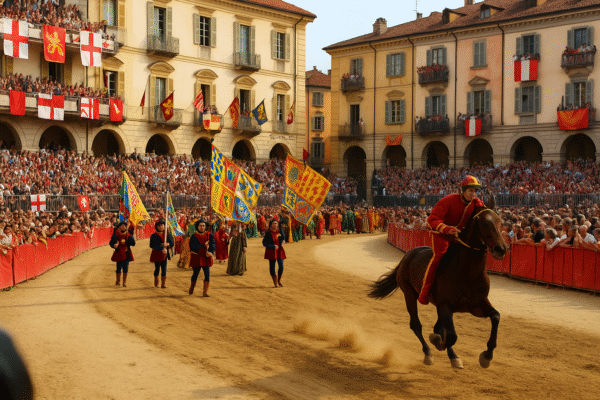Every second Sunday of September, the charming city of Asti in Piedmont, northwestern Italy, comes alive with the Palio di Asti, the nation’s oldest recorded horse race dating back to 1275. The cobblestone streets and medieval architecture provide the perfect backdrop for a day filled with tradition, pageantry, and fierce competition.
This centuries-old festival is not just a thrilling sporting event; it is a cultural institution that unites the city’s neighborhoods—known as “rioni”—in a passionate display of community pride. Visitors are treated to an immersive journey into the past, complete with a grand medieval parade, colorful flags, trumpeting heralds, and riders dressed in traditional costumes.
Tourism Magnet for Piedmont
In 2025, tourism authorities expect tens of thousands of visitors to flock to Asti for the Palio, bringing a significant boost to the local economy. According to the Piedmont Region Tourism Board, hotel occupancy rates during the festival reach over 95%, with accommodations often booked months in advance.
Restaurants, cafés, wine bars, and artisan shops enjoy a surge in customers, as festival-goers indulge in the region’s celebrated cuisine and world-class wines. The Palio di Asti not only benefits the city but also draws tourists to surrounding wine country, where vineyards produce Barbera d’Asti DOCG and Moscato d’Asti DOCG, both globally renowned labels.
Cultural Heritage on Display
The Palio is preceded by the Sfilata Storica, a majestic historical parade featuring over 1,200 participants in period costumes. Each “rione” proudly displays its medieval banners and traditional attire, telling the story of Asti’s past. The parade winds its way through the historic center to Piazza Alfieri, where the race is held on a specially prepared dirt track.
The race itself is a spectacle of speed and skill. Bareback riders representing 21 different districts and nearby towns compete for the coveted Palio banner, a hand-painted silk prize created annually by a local artist. Victory not only brings glory but also strengthens the identity of the winning community.
A Boost for Local Economy and Global Recognition
The Palio di Asti has become an integral part of the Piedmont tourism strategy, supported by the Italian Ministry of Culture. The event generates millions of euros in direct and indirect economic impact, particularly in the hospitality, gastronomy, and retail sectors.
According to the Comune di Asti, nearly 40% of visitors during the Palio are international tourists, with notable numbers from France, Germany, the UK, and the United States. Many plan extended stays, exploring UNESCO-listed vineyard landscapes of Langhe-Roero and Monferrato, just a short drive from the city.
Wine, Food, and Festival Spirit
The Palio week is a feast for the senses. Visitors can enjoy local delicacies such as tajarin pasta, agnolotti del plin, and bagna cauda, paired with bold reds and sweet sparkling whites. Wine-tasting events and open cellar tours are organized by Asti Spumante and Barbera wine consortia, adding another layer to the festival’s appeal.
For many, the Palio is also a chance to participate in cantine storiche tours—historic wine cellars hidden beneath the city—which are normally closed to the public. This combination of sport, culture, and gastronomy makes the Palio di Asti an irresistible attraction for heritage tourism enthusiasts.
Sustainable Tourism Efforts
Local authorities have implemented several eco-friendly initiatives to preserve the city’s heritage while welcoming large crowds. Measures include:
- Free public shuttle services to reduce traffic congestion
- Recycling and waste management stations around the festival area
- Partnerships with local artisans to promote sustainable souvenirs
- Encouraging slow travel and visits to lesser-known villages in the province to spread tourism benefits
These initiatives align with Piedmont’s broader goal of balancing tourism growth with environmental stewardship.
Why Visit Asti Beyond the Palio
While the Palio di Asti is a highlight, the city offers attractions year-round. Key landmarks include:
- Cattedrale di Santa Maria Assunta – A stunning example of Gothic architecture
- Torre Troyana – A medieval tower with panoramic city views
- Piazza San Secondo – The lively heart of Asti, lined with historic cafés
- Nearby wine trails connecting to Alba and Moncalvo
Autumn visitors can also coincide their trip with Douja d’Or, Italy’s prestigious national wine fair, held in Asti in September.
Looking Ahead
The Palio di Asti’s enduring success lies in its ability to combine heritage, community, and tourism appeal. In 2025, the festival is expected to attract record-breaking crowds, with the event livestreamed globally to showcase Piedmont’s cultural excellence.
As Asti continues to position itself as a premier cultural destination in Italy, the Palio remains its most powerful ambassador—celebrating a tradition nearly 750 years old while driving a modern tourism economy.
For more travel news like this, keep reading Global Travel Wire
















